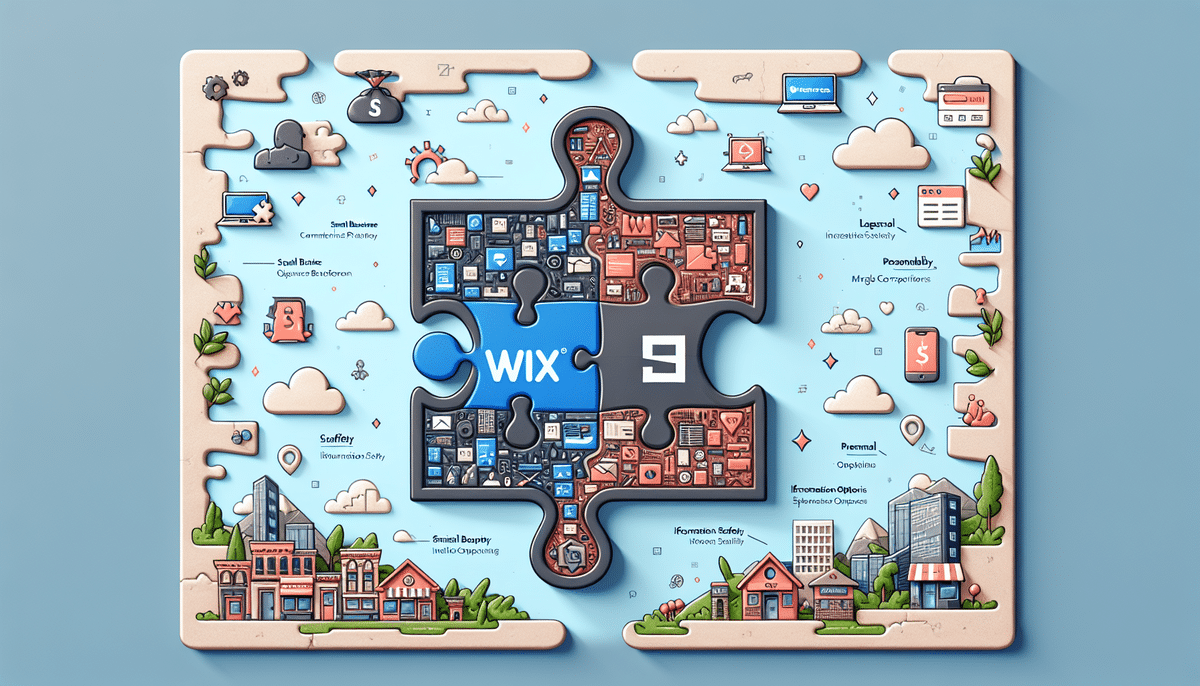Wix eCommerce vs Magento (Adobe Commerce): Comprehensive Comparison for 2024
Choosing the right eCommerce platform is crucial for the success of your online business. Among the myriad of options available, Wix eCommerce and Magento (Adobe Commerce) stand out as popular choices. This article provides an in-depth comparison of both platforms, evaluating their features, customization options, SEO capabilities, pricing, and more to help you make an informed decision.
Overview of Wix eCommerce and Magento (Adobe Commerce)
Wix is a user-friendly website builder that offers a comprehensive eCommerce solution. Known for its intuitive drag-and-drop interface, Wix allows users to create visually appealing online stores without requiring technical expertise. It offers a variety of design templates, multiple payment options, and seamless integrations with third-party applications.
Magento (Adobe Commerce), on the other hand, is a robust and scalable eCommerce platform designed for larger businesses with high-volume sales. As an open-source platform, Magento provides advanced features such as customizable code, multiple storefront options, and comprehensive SEO plugins, making it a preferred choice for enterprise-level operations.
Key Features and Functionalities
Wix eCommerce Features
- Drag-and-drop website builder
- Over 500 designer-made templates
- Integrated payment gateways (PayPal, Stripe, etc.)
- Inventory management
- SEO tools and marketing integrations
Magento (Adobe Commerce) Features
- Highly customizable architecture
- Multi-store and multi-language support
- Advanced SEO and marketing tools
- Comprehensive inventory and order management
- Extensive third-party integrations and extensions
According to a Statista report, Magento holds a significant market share among large-scale eCommerce platforms, underscoring its popularity among enterprises.
Customization and Flexibility
Wix eCommerce Customization
Wix offers a range of customizable templates that cater to various industries. Users can modify layouts, colors, and content through the drag-and-drop interface. While Wix provides some flexibility, extensive customizations may require knowledge of CSS.
Magento (Adobe Commerce) Customization
Magento excels in customization, allowing developers to modify the codebase to meet specific business needs. It supports custom themes, extensions, and integrations, offering unparalleled flexibility. This makes Magento suitable for businesses with unique requirements and the resources to manage complex customizations.
For businesses needing advanced customization, Magento's open-source nature provides the freedom to tailor the platform extensively, as highlighted in the CMS Wire comparison.
SEO and Marketing Capabilities
Wix eCommerce SEO Tools
Wix offers built-in SEO features such as customizable meta tags, alt text for images, and SEO-friendly URLs. Additionally, Wix provides SEO guides and a user-friendly interface to help businesses optimize their online presence.
Magento (Adobe Commerce) SEO Tools
Magento provides advanced SEO capabilities, including full control over URL structures, meta descriptions, and keyword optimization. It also supports rich snippets, canonical URLs, and integration with Google Analytics for in-depth performance tracking.
According to a study by Search Engine Land, Magento's comprehensive SEO tools give it an edge for businesses aiming for high search engine rankings.
Pricing and Cost Analysis
Wix eCommerce Pricing
Wix offers a range of pricing plans tailored to different business needs. The Business Basic plan starts at $23/month, providing essential eCommerce features suitable for small to medium-sized businesses. Higher-tier plans offer additional features such as advanced reporting and subscription options.
Magento (Adobe Commerce) Pricing
Magento offers a more complex pricing structure, primarily based on the specific needs of the business. The Magento Open Source version is free, but businesses often incur costs related to hosting, development, and customization. The Adobe Commerce solution, tailored for enterprises, can range from $22,000 to $125,000 annually, depending on the scale and requirements.
A Software Advice comparison highlights that while Wix is more cost-effective upfront, Magento may offer better long-term value for larger businesses requiring extensive features and scalability.
Customer Support and Resources
Wix eCommerce Support
Wix provides 24/7 customer support through email and phone. Additionally, it offers a comprehensive knowledge base, including tutorials, webinars, and community forums to assist users in maximizing the platform's potential.
Magento (Adobe Commerce) Support
Magento offers extensive support through community forums, detailed online documentation, and support tickets. For businesses using Adobe Commerce, dedicated support plans are available, providing access to expert assistance and advanced troubleshooting.
As reported by G2 reviews, Magento's support ecosystem is robust, particularly for enterprises that opt for paid support plans.
Case Studies and Success Stories
Both Wix eCommerce and Magento (Adobe Commerce) have been leveraged by successful businesses to enhance their online presence:
- Wix eCommerce: Brands like Boxy Charm and Spiceology have utilized Wix to create visually appealing and user-friendly online stores.
- Magento (Adobe Commerce): Major brands such as Nike, HP, and Nestle rely on Magento for its scalability and robust feature set to support their extensive eCommerce operations.
These examples demonstrate the versatility and capability of both platforms to support businesses of varying sizes and needs.
Conclusion: Which Platform is Right for Your Business?
Both Wix eCommerce and Magento (Adobe Commerce) offer unique strengths tailored to different business requirements. If you are a small to medium-sized business seeking an affordable, user-friendly platform with essential eCommerce features, Wix eCommerce is an excellent choice. Its intuitive interface and comprehensive support make it ideal for businesses without extensive technical resources.
Conversely, if you manage a large-scale eCommerce operation that demands advanced customization, scalability, and robust SEO capabilities, Magento (Adobe Commerce) is the better option. While it requires a higher investment in terms of cost and technical expertise, the platform's flexibility and extensive feature set can drive significant growth and efficiency for enterprise-level businesses.
Ultimately, the decision should align with your business goals, budget, and technical capabilities. Assessing your specific needs and considering the strengths of each platform will help you choose the solution that best supports your eCommerce objectives.






















